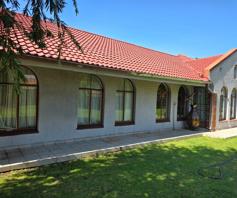Getting a foot on the property ladder has always been a primary goal for most people and, as their lives change over the years, so do their property requirements, however, significant shifts in buyer’s priorities in recent years have precipitated notable changes in how these new needs are being met.

“Traditionally, the popular first-time buyer choice was a flat in an urban location close to the action and when it was time to settle down, city living was traded for suburbia and, in later years, once the children were grown, downsizing most often meant moving to retirement accommodation," says Grahame Diedericks, Managing Principal for Lew Geffen Sotheby’s International Realty in Midrand.
“And all of these moves were not only to new homes but usually also to new neighbourhoods which meant changing amenities and making new friends in the community each time and travelling considerable distances on a daily basis.
“However, much has influenced the world during the past decade, including the technological advances which have altered how we live and work and the fact that millennials have overtaken the baby boomers to become the largest property-buying demographic.”
Born in the age of technology, millennials are leaving the biggest footprint on an industry that saw very little change for decades as they have very different needs, priorities, and expectations than their predecessors.

“They highly value experiences and the freedom of convenience and often cite location as one of the top influencing factors when house buying. They want the best of both worlds - to be where the action is and close to amenities like restaurants, bars and shops however, as many now have children, they also want to be in close proximity to schools and green spaces.
“These two factors, along with growing security concerns, traffic congestion and the increasing appeal of convenience in all demographics, have led to the development of suburban commercial hubs and, on a larger scale, to entire precincts that offer a work, play and stay environment with every necessary amenity.
“Putting people at the centre of the way their communities are planned, how they operate and evolve leads to positive impacts on their everyday life.”
Diedericks says that the general characteristics of these neighbourhoods include the following:
· High-quality public spaces, streets and general infrastructure;
· Good access to services that support local living;
· A variety of housing types that cater to different levels of affordability and lifestyles;
· High-quality green spaces for people to enjoy;
· Thriving local economies with employment opportunities;
· Good digital connectivity to enable flexible working, business opportunities;
· Remote access to public services;
· Formal and informal play spaces for children;
· Community participation and local engagement opportunities.
“Liveability is the new watchword which basically translates to living locally with easy access to most of the facilities and activities we need on a daily basis and this gold standard no longer only applies to millennials.
“Increasingly, people want to remain within the community they already know and love and they prefer not to have to find new favourite restaurants, doctors and hairdressers because the time has come to downsize or they’ve become successful enough to upgrade their home.”
Diedericks adds that additional benefits of such neighbourhoods and precincts are that they can better support the transformative social and economic changes that will be needed to tackle some of the key challenges we face around climate, health, green recovery and the resilience of our communities.
“Neighbourhoods like Melrose Arch in Johannesburg and De Waterkant in Cape Town are good examples of successful mixed-use suburbs and, on a larger scale, are developments like Waterfall in Midrand which takes liveability to a whole new level, ticking all the boxes on the checklist above.

“Comprising 2 200 hectares, it’s a vibrant, multi-award-winning urban development that’s secure, easily accessible from major highways, has a world-class fibre optic and wireless communication network, and on-site alternative energy provision.
“The central business district, Waterfall City, is home to state-of-the-art offices and client-driven, low-density developments along with a residential component, retail, hotels, a hospital and green spaces alongside the commercial buildings and office parks.
“And Waterfall’s extensive residential property offerings cater for every age group, lifestyle and budget, from the lock-up-and-go convenience of a city apartment to the quiet streets of a suburban neighbourhood to community-living amongst fellow empty nesters and retirees.
“Which ultimately means that from the time you buy your first home right up to retirement, no matter how many times you move, you never have to forfeit the community and all the conveniences that you’ve enjoyed over the years.
“And the ability to grow older in place has real advantages, both for the individual and also for a community. Not only are there benefits to the health of older people when they are part of an active community, but the local knowledge, history and skills are shared across the community which serves to make it that much stronger.”
“The pandemic has shone a light on the health and environmental benefits of having more accessible and inclusive neighbourhoods, so I think it’s safe to say that mixed-use neighbourhoods and precincts like Waterfall are now an established rather than an emergent trend,” says Diedericks.
Want all the latest property news and curated hot property listings sent directly to your inbox? Register for Property24’s Hot Properties, Lifestyle and Weekly Property Trends newsletters or follow us on Twitter, Instagram or Facebook.








